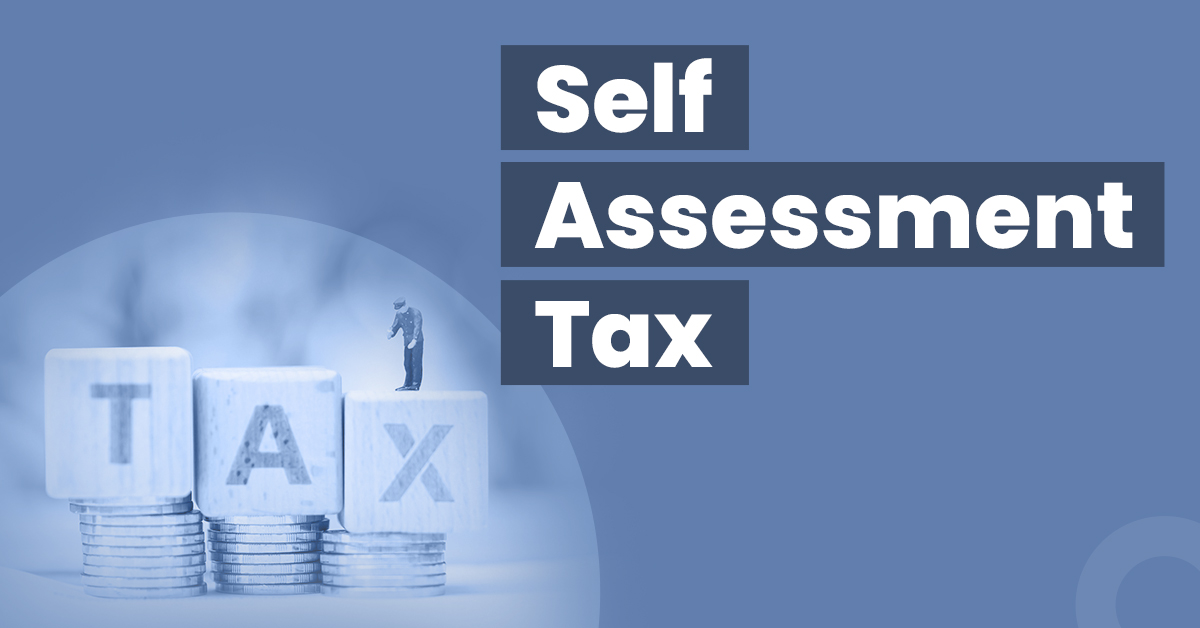Self-Assessment Tax – How to Pay Online & Calculation


The Government of India collects tax in various forms, tax deducted at source (TDS), advance tax, etc. Self-assessment tax is one such another way of collecting tax, which comprises the balance amount or tax due that an assessee is liable to pay due to the increase in the tax burden during the previous year.
Self-assessment tax is the amount that a taxpayer pays where the liability is more than the actual amount of tax deducted at source, advance tax, etc. It is pivotal to pay taxes in full to make the return filing process successful and valid.
How to Pay Self-Assessment Tax Online?
Here are the following steps to follow for successful online payment of self-assessment tax:
- Step 1: The first step begins by logging in to the Tax Information Network website of the Income Tax Department of the Government of India.
- Step 2: On this website, follow the navigation tab to click “E-Pay Taxes” under Services > E-Payment Section. Click a proper link for e-payment, which will redirect to the website of NSDL.
- Step 3: This step involves selecting the relevant challan, i.e. ITNS 280, ITNS 281, ITNS 282, ITNS 283, ITNS 284 or Form 26 QB demand payment, whichever is applicable for an individual.
- Step 4: In this step, an individual needs to provide details like PAN/TAN and challan information like the nature of payment made, contact details and address of a taxpayer, bank name and details through which the payment will be made, etc.
- Step 5: After the submission of all the above-mentioned details, the portal will redirect to a submission page. (Note: It is important to note that if PAN or TAN information provided by an individual is valid as per ITD PAN/TAN master, then this website will fetch complete details of a taxpayer, including full name, on the screen.)
- Step 6: After confirmation and verification of information entered in the screen, a taxpayer will land on the net-banking site for payment.
- Step 7: In this step, login details will be required, like a user id/password for net banking. A taxpayer needs to log in to the net-banking website and enter the payment information.
- Step 8: This final step involves the successful payment of an e-tax. A challan will be generated and displayed on the screen, which will consist of CIN and payment information like bank name.
A taxpayer must keep this challan as it acts as proof that the payment has been made.
With the advancement of technology and fast connection, making e-payment of taxes following the steps mentioned above involved a hassle-free process of successful payment of self-assessment tax.
What Is the Calculation Process for Self-Assessment Tax?
The seamless calculation process of self-assessment tax for the financial year involves a few simple steps:
- Step 1: The first step begins with calculating the total taxable income amount of an individual on the basis of income tax slabs.
- Step 2: Add interest which is required for payment u/s 234A or 234B, or 234C.
- Step 3: After completion of this addition, this step involves the deduction of the relief amount as mentioned in Section 90 or 90A. This deduction must be made from the total amount.
- Step 4: In this step, a taxpayer further needs to do the subtraction of MAT credit amount u/s 115JAA (applicable only for company/firm)..
- Step 5: Once done, the deduction of the advance tax amount must take place in this final step to find out the exact self-assessment tax paid by a taxpayer.
What Is Partly Paid Self-Assessment Tax?
Partly-Paid Self-Assessment Tax is a situation where the entire tax amount to be payable is not paid in full. In this case, a taxpayer’s first payment is adjusted with the interest required to pay and a balanced amount. Here is an example showing the payment of partly-paid self-assessment tax.
| Particulars | Amount |
| Income Tax Payable | ₹3,00,000 |
| Add: Interest u/s 234A/234B/234C | ₹50,000 |
| Less: TDS and Advance Tax | ₹30,000 |
| Self-Assessment Tax Payable u/s 140A | ₹3,20,000 |
| Amount paid (partly-paid) | ₹2,00,000 |
How to Make Challan Status Inquiry for Self-Assessment Tax Payment?
Taxpayers may want to check the status after paying the self-assessment tax, which can be achieved with the help of a few simple steps:
- Step 1: Visit the official TIN-NSDL portal. On this page, click on the “Service” section and select the “Challan Status Inquiry” tab.
- Step 2: In this redirected page, select “CIN-based view” below the “For Taxpayer’s title”. Choose yourself as a taxpayer.
- Step 3: In this step, an individual needs to verify a few details of the challan slip, like challan tender time, challan serial number, etc. Once done with the verification, insert the captcha cryptogram and press on the “agree” option.
It is crucial to know that it may take up to 5 to 10 days to refresh the status, and taxpayers may expect the possible three outcomes from this inquiry: No records, price matched and accepted by TIN.
What Is the Significance of Form 26AS in the Context of Self-Assessment Tax?
Form 26AS is highly important as it contains tax-related information. It comprises tax deducted at source (TDS), tax collected at source (TCS), self-assessment tax payment, advance tax payment, etc.
This form serves its significance as taxpayers can verify past actual transactions before filing an income tax return. In addition, this reduces the chances of errors as it offers clear information about all taxes paid through bank accounts on behalf of a taxpayer.
Final Word
A self-assessment tax is pivotal to file before filing an income tax return. It must be calculated by deducting all tax credits like TDS, TCS, MAT credit, etc. In the case of a salaried individual, successful filing of income tax will occur once the self-assessment tax payment is completed. Hence, a taxpayer must calculate and file carefully, as minor discrepancies can lead to major hindrances in future tax payments.
Frequently Asked Questions
Is there any penalty if a taxpayer fails to pay self-assessment tax?
According to section 140A (3), if a taxpayer fails to pay the self-assessment tax (either whole or partially), interest, or charge, the taxpayer is considered an assessee in default. In such a circumstance, the penalty would be imposed at the discretion of the assessing officer.
What is the simplest procedure for filing Self-Assessment Tax?
The procedure of filing self-assessment tax involves visiting the online NSDL site and selecting Challan 280. Then you should fill up all details applicable, following online payment to complete the process.






